To understand the world of crypto-currency in video games, in order to learn the basics of crypto-currencies and blockchain, it is essential to master some general notions about the vast ecosystem of crypto-currencies and blockchain. We have selected the essential basic vocabulary related to video games blockchain that you will need to understand the world of crypto gaming, metaverse, NFTs, etc.
However, if you feel the need to supplement your knowledge with a crypto-currency lexicon more oriented to investment, trading, etc., we suggest at the bottom of this article some additional reliable sources.
Crypto-currency and crypto gaming lexicon
Here are some definitions and a bit of vocabulary that will help you if you are new to the world of crypto-currencies and gaming. Not an exhaustive list!
Airdrop
An airdrop is a marketing action that consists of giving away free crypto-currency from a new project. When the team wants to promote the launch of their project to their community, they will offer tokens under certain conditions.
ATH / ATL
ATH literally stands for All Time High. This refers to a crypto-currency that has reached its highest price since its existence on the market. Conversely, ATL stands for All Time Low, the lowest price a crypto-currency has ever reached.
Bear market / Bull market
A bear market is a market with a downward trend. A bear market can last for several months or even years. Conversely, a bull market is a market that is trending upwards for the majority of the crypto-currencies on the market. The terms bearish and bullish are used to refer to both bearish and bullish situations.
Blockchain
The blockchain is a huge decentralized database of linked blocks. It records all information related to crypto-currencies. It is an ultra-secure, transparent information storage and transmission technology that operates without a central control body. Anyone can check the validity of any transaction, just like in a public, anonymous and unforgeable accounting ledger.
Chart
A chart is a graph showing the price of crypto-currencies and digital assets.
Private key
A private key is a sequence of letters and numbers usually stored in a wallet of digital assets. It is often invisible to the user unless they go looking for it specifically. The wallet uses this private key to sign the transactions sent. This way, you prove that you are the owner of what is in your wallet, so you can validate the transaction.
Public key
A public key is used to receive crypto-currencies. It could be compared to a RIB/IBAN for traditional currencies. This key is in the form of a sequence of numbers and letters.
Crypto-currency
A crypto-currency is a digital currency based on the principles of cryptography. It functions as a medium of exchange in a decentralized peer-to-peer economic system like a blockchain. Unlike fiat currencies, the use of crypto-currencies does not require the intervention of a trusted third party such as a bank and integrates the user in the process of storing and validating transactions.
DAO : Decentralized Autonomous Organization
A DAO, or Decentralized Autonomous Organization, is an entity operating through automated governance rules owned by the community that helped fund and create it. The DAO operates through a set of smart contracts, so the rules of governance are immutably and transparently written into the blockchain.
Dump
A dump represents a fairly significant downward movement. In other words, it is the significant drop in the price of a cryptocurrency. It can cause concern among traders or investors.
DYOR
We can't repeat it enough, Do Your Own Research. DYOR is an acronym that you will see often, because in this business, if there is a golden rule, it is not to rely on a single source of information. Do your own research, only invest the money you are willing to lose and always be very careful and well researched.
Ethereum
Ethereum is a platform similar to a "world computer" based on blockchain technology that allows developers to build decentralized applications. Its main role is to execute smart contracts, computer programs that do not require the intervention of a trusted third party to be executed. The blockchain Ethereum works with the Ether (ETH) crypto-currency.
ERC-721
The tokens ERC-721 are a category of tokens Ethereum. They are NFTs (Non-Fungible Tokens) widely used in blockchain video games. Most of the NFTs you own therefore meet the ERC-721 standard of the blockchain Ethereum.
Exchange
A exchange is a platform from which it is possible to exchange your crypto-currencies for other crypto-currencies or for fiat currencies. On a exchange like Binance, for example, you can buy, sell, and store your coins in a portfolio at your disposal.
FOMO
FOMO is the acronym for Fear Of Missing Out. It represents the fear of missing out on a good deal and often leads to impulsive decision making.
Gas fees
The gas fees are mandatory transaction fees of the blockchain Ethereum in order to validate a smart contract. Computing power must be used, and this has a cost. Each transaction performed on the Ethereum network consumes gas.
ICO
An ICO (Initial Coin Offering) represents the raising of funds for a project in the crypto-currency world. In an ICO, the public is invited to invest in the newly created token. An ICO always carries a risk as the investor exchanges a reference currency (such as ETH) for the first tokens of a new crypto-currency.
IGO
IGO stands for Initial Game Offering. The concept is very similar to ICO, the difference is that IGO is dedicated to gaming projects and investors will be able to acquire NFTs or other rewards from the game blockchain in preparation.
Layer 2 Ethereum
The layer 2 is a branch that overlays the main network (layer 1) of a blockchain. One of the layer 2s of the blockchain Ethereum is Immutable X, used in several crypto video games. The use of layer 2 solutions has become common if one wishes to interact with the network without paying exorbitant fees (gas fees).
Marketplace
A marketplace in the world of NFTs and crypto-currencies, is a platform on which it is possible to buy and sell NFTs. Whether you are a professional or an individual, you can create sales or acquire NFTs. One of the most popular marketplaces of NFTs is Opensea.
Market cap
The market cap of a crypto-currency represents the total value of that currency at a given time. To obtain the market cap of a crypto-currency, you need to multiply the number of units in circulation by the current price per unit.
MetaMask
MetaMask is a digital wallet crypto-currency used to interact with the blockchain Ethereum, among others. It allows users to access their wallet via a browser extension and mobile app. It is essential for validating certain transactions and connecting to apps.
Metaverse
The metaverse can be defined simply as a persistent and shared virtual universe with social interactions. But to better understand what it is exactly (because this definition is very limiting), I invite you to read my full article on the metaverse.
Mint
Mint literally means "to mint". This term is used to refer to the act of publishing an NFT on blockchain. This means that once an NFT is mint on blockchain, it is noted in the blockchain's forgery-proof and public register forever.
NFT
NFT stands for Non-Fungible Token. NFTs represent non-interchangeable digital elements. They are unique and authentic. NFTs exist thanks to the blockchain technology. This one allows to store and transmit data in a decentralized and secured way.
To understand in depth all the aspects, I invite you to read my complete article on the definition of an NFT.
Play and Earn
Unlike a Play to Earn game (see next definition), which is about playing to win, in a Play and Earn game the focus is on playing. The possibility of winning tokens, NFTs and more, is more a positive consequence than a goal in itself.
Play to Earn
A Play to Earn is a video game developed on the blockchain that allows you to earn money by playing. In a Play to Earn, you can farm and collect the game's crypto-currency and earn tokens and NFTs. With this mix of gaming and finance, P2E falls into the GameFi category.
Pump
Unlike a dump, a pump is a sudden increase in the price of a crypto-currency.
ROI
ROI stands for Return on Investment. It corresponds to a rate of return, therefore expressed as a percentage, calculated according to the amount of money gained or lost in relation to the initial investment.
Scam
A scam is simply a scam, a swindle. We also talk about exit scam when the founders of a project leave with the money of the investors without developing a finished product, after an ICO for example.
Smart contract
Smart contracts are autonomous computer protocols based on the blockchain technology of the Ethereum network. Smart contracts allow users to conduct transactions in a transparent and conflict-free manner, while avoiding the services of a (decentralized) intermediary. They automatically execute predefined conditions functioning as any conditional instruction (if such condition is verified, then such consequence is executed).
To validate an instruction on the blockchain Ethereum, you need computing power. This is provided by the participants in the network (the miners of Ether) who make the computing power of their PC's graphics card available to run the blockchain.
Staking
The staking is a process that allows you to block a certain amount of crypto-currency, for a certain period of time, on a project in which you believe. Once blocked, one can no longer use these crypto-currencies, they allow one to support the project by contributing to the actions of the blockchain. The interest for the user is to receive rewards at the end of the given period, proportional to the amount of staking. Depending on the project, the conditions of staking can be different.
Tokens
Tokens are digital units issued on a blockchain. They can be exchanged for assets. They are specific to each project.
Tokenomics
Tokenomics is the contraction of Token and Economy. For a crypto project, the tokenomics designates the way in which the creation of tokens will be managed for the proper functioning of the project. It also designates the utility of the token and finally, the whole economic system imagined for the project.
Wallet
A wallet is a digital wallet that manages private keys and thus crypto-currencies. One of the most famous digital wallets is MetaMask (I explain here how to create a wallet MetaMask), required in many crypto projects. Among other things, wallets allow you to send and receive crypto-currency, display your balance, etc.
Note that there are also wallets hardware like Ledger, which are physical USB key.
Web 3.0
Web 3.0 brings decentralization to the Internet ecosystem. It represents the latest generation of Internet applications and services powered by blockchain technology bringing interconnected and decentralized data.
Whitelist
A whitelist or White list is a list of trusted individuals selected to participate in an ICO (Initial Coin Offering). There is an exclusive side to being whitelisted for a project.
White paper
The White paper or White Paper is the document or practical guide that lists all the information related to the project concerned. The white paper presents the details of the project, its business model, etc. Reading the whitepaper is an excellent way to learn more about the project and to get a clear picture of it before investing.
Additional sources of crypto-currency lexicon
- Binance Academy Lexicon (EN)
- Cryptoast Lexicon (FR)
- Coin Academy Glossary (FR, ES, EN)
- Glossary of the Journal du Coin (FR)

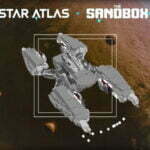



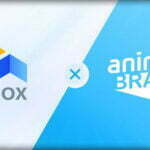


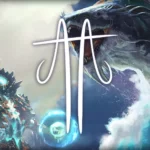


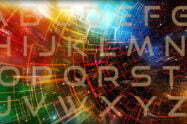
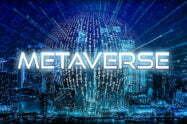
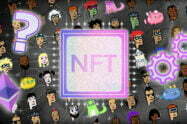
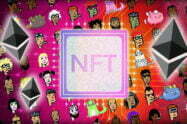
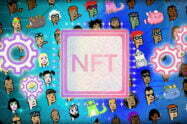
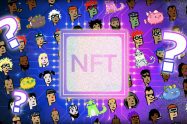


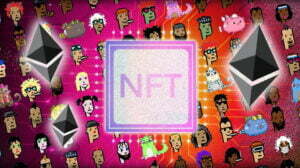

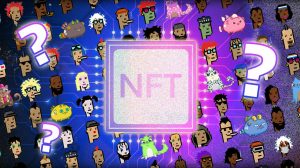















Add Comment